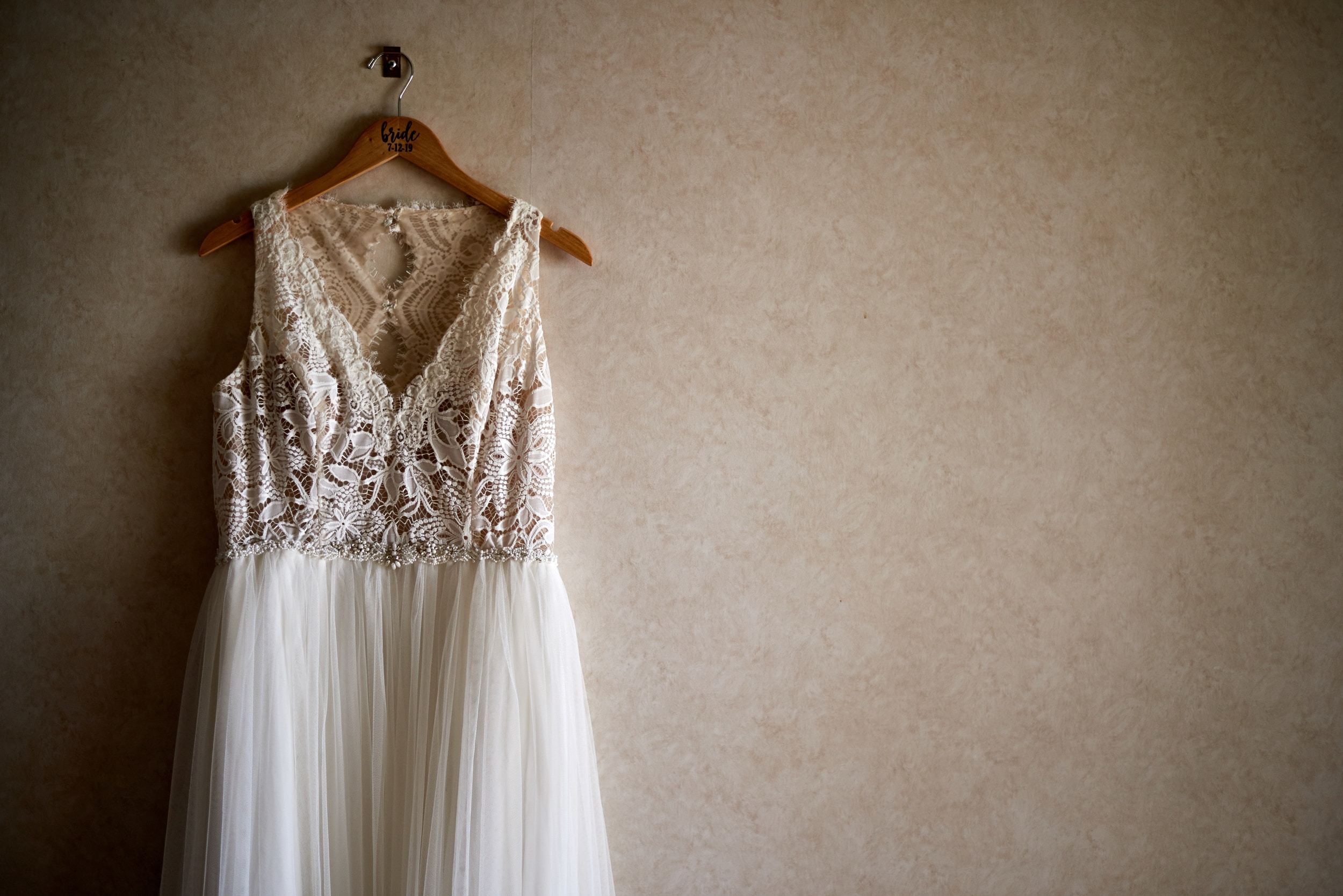The Art of Wedding Dress Alterations
Your wedding day is one of the most significant moments in your life, and every detail should be perfect. From the venue to the flowers, every element contributes to creating a day you'll cherish forever. Among these details, the wedding dress holds a special place, embodying the essence of your love story. However, finding the perfect fit straight off the rack can be a challenge. That's where our passion and expertise in wedding dress alterations come into play.

At Shoreline Sewing, we understand that every bride is unique, and her wedding dress should reflect her individual style and personality. I am dedicated to transforming your dream dress into a reality. Whether it's a vintage gown passed down through generations or a modern design that needs a few tweaks, we're here to ensure your dress fits like a glove and captures the magic of your special day.
My commitment to perfection is reflected in our attention to detail and precision. Here is a brief history of wedding dresses.
Ancient Times:Wedding ceremonies have been a part of human culture since ancient times, but the concept of a specific dress for the occasion is relatively modern. In ancient civilizations like Egypt, Greece, and Rome, brides often wore elaborate robes or tunics in vibrant colors, adorned with jewels, beads, and embroidery. These garments symbolised wealth, status, and fertility.
Medieval Era:During the Middle Ages, brides typically wore their best dresses, which were often richly colored, and practicality was emphasized over extravagance. Blue was a popular choice for wedding attire, symbolizing purity and fidelity. Royalty and nobility, however, often flaunted sumptuous fabrics like velvet and silk, embellished with gold thread and fur.
Renaissance and Baroque Periods: In the Renaissance and Baroque eras, wedding dresses became more elaborate and structured, with voluminous skirts, fitted bodices, and intricate lace details. Wealthy brides showcased their family's prosperity through opulent fabrics like satin, brocade, and lace, while modesty and virtue remained important virtues conveyed through high necklines and long sleeves.
Early 20th Century: In the early 20th century, wedding dresses continued to evolve, reflecting the changing societal norms and fashion trends. The 1920s saw the emergence of flapper-style wedding dresses, characterized by dropped waists, shorter hemlines, and art deco-inspired embellishments. Meanwhile, the 1930s and 1940s favoured more romantic silhouettes with bias-cut gowns and sweetheart necklines.
Mid to Late 20th Century:The mid to late 20th century brought diversity to wedding dress styles, influenced by the post-war economic boom, Hollywood glamour, and the rise of fashion designers. The 1950s saw the popularity of full-skirted ball gowns inspired by the fairy-tale weddings of celebrities like Grace Kelly and Jacqueline Kennedy. In the 1960s and 1970s, bridal fashion became more eclectic, ranging from sleek mod-inspired dresses to bohemian styles adorned with flower crowns and flowing sleeves.<strong>
Contemporary Trends: Today, wedding dress trends are incredibly diverse, reflecting individuality and personal style. While traditional white gowns remain popular, brides have endless options, from minimalist slip dresses to elaborate ball gowns, from vintage-inspired lace to modern avant-garde designs. Designers continuously push boundaries, incorporating innovative fabrics, intricate detailing, and unexpected silhouettes to create unforgettable bridal looks.In conclusion, the history of wedding dresses is a rich tapestry woven with tradition, symbolism, and fashion evolution. From ancient rituals to modern-day celebrations, the wedding dress continues to captivate and inspire, embodying the hopes, dreams, and aspirations of brides throughout the ages.